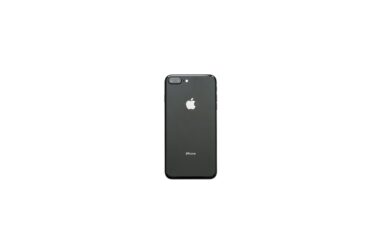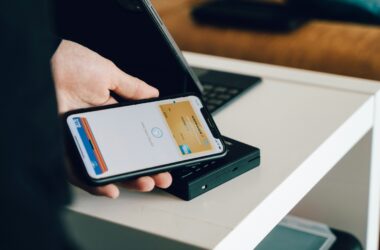Introduction
In today’s fast-paced business world, the use of mobile technology has become indispensable. Did you know that over 80% of Fortune 500 companies deploy iPhones to enhance their enterprise operations? This staggering statistic highlights the significant role iPhones play in modern business environments. As more companies integrate iPhones into their daily workflows, understanding how to maximize their potential becomes crucial.
In this blog post, we’ll delve into essential tips and tricks for using iPhones effectively in enterprise settings. Whether you’re looking to boost productivity, enhance security, or leverage advanced features, we’ve got you covered.
We’ll start by exploring ways to optimize your iPhone for business productivity, followed by key strategies to enhance security. Next, we’ll reveal some lesser-known tricks that can make a big difference in your daily tasks. We’ll also highlight top iPhone apps that every enterprise professional should consider. Finally, we’ll wrap up with advanced tips to help you get the most out of your device. Let’s get started!
1: Optimizing iPhone for Business Productivity
1.1 Boosting Efficiency with iPhone
Maximizing your iPhone’s capabilities can significantly boost your business productivity. Here are two essential tips to help you optimize your iPhone for work:
Tip 1: Using Productivity Apps
Productivity apps like Microsoft Office, Slack, and Trello can transform your iPhone into a powerful business tool, enhancing collaboration and task management.
Microsoft Office:
- Document Creation and Editing: With Word, Excel, and PowerPoint, you can create, edit, and share documents, spreadsheets, and presentations on the go.
- Cloud Integration: Sync your work with OneDrive, allowing seamless access to your files from any device.
Slack:
- Instant Communication: Slack enables real-time messaging with your team, helping to streamline communication and reduce email clutter.
- Channels: Organize conversations by creating channels for different projects or departments, ensuring focused and efficient discussions.
- Integration: Integrate with other tools like Google Drive, Trello, and more to keep all your work in one place.
Trello:
- Task Management: Trello’s board and card system makes it easy to track tasks, set deadlines, and manage projects visually.
- Collaboration: Invite team members to boards, assign tasks, and leave comments, ensuring everyone is on the same page.
- Automation: Use Trello’s Butler feature to automate repetitive tasks, saving time and reducing manual work.
These productivity apps help you stay organized, enhance collaboration, and manage tasks efficiently, making your workday more productive.
Tip 2: Customizing Notifications for Work-Related Apps
Managing notifications effectively can minimize distractions and help you stay focused on important tasks. Here’s a step-by-step guide to customizing notifications for your work-related apps:
- Open Settings: Go to the Settings app on your iPhone.
- Select Notifications: Tap on “Notifications” to view all your apps.
- Choose App: Select the app for which you want to customize notifications, such as Slack or Trello.
- Customize Alerts:
- Allow Notifications: Toggle the switch to enable or disable notifications for the app.
- Alert Style: Choose how you want to receive alerts—on the lock screen, in the notification center, or as banners.
- Sounds: Turn off sounds for less important notifications to reduce noise.
- Badges: Enable or disable app icon badges to show the number of unread notifications.
- Set Notification Preferences: For apps like Slack, you can set specific preferences within the app. For example, mute channels that are less relevant or set Do Not Disturb hours during your focus time.
- Group Notifications: Use the “Notification Grouping” feature to bundle notifications by app or thread, making them easier to manage.
By customizing notifications, you can ensure that only the most important alerts capture your attention, helping you maintain focus and productivity throughout your workday.
Implementing these tips will help you harness the full potential of your iPhone, making it a powerful tool for boosting business productivity.
2: Enhancing Security on iPhone for Enterprise Use
2.1 Keeping Your Business Data Secure
Ensuring the security of your business data is paramount when using iPhones in an enterprise environment. Here are two critical tips to help you enhance security:
Tip 1: Enabling Two-Factor Authentication
Two-factor authentication (2FA) adds an extra layer of security by requiring not only a password and username but also something that only the user has on them, such as a physical token. This significantly reduces the risk of unauthorized access.
Benefits of Two-Factor Authentication:
- Enhanced Security: Even if someone obtains your password, they still need the second factor to access your account.
- Data Protection: Helps safeguard sensitive business data from cyber threats.
- Compliance: Meets many regulatory requirements for data protection.
How to Set Up Two-Factor Authentication on iPhone:
- Open Settings: Go to the Settings app on your iPhone.
- Tap Your Name: At the top of the screen, tap your name to open your Apple ID settings.
- Select Password & Security: Choose the “Password & Security” option.
- Enable Two-Factor Authentication: Tap “Turn On Two-Factor Authentication” and follow the on-screen instructions to complete the setup.
Tip 2: Using VPNs for Secure Connections
Virtual Private Networks (VPNs) provide a secure connection over the internet, ensuring that all data transmitted between your device and the network is encrypted. This is especially important when accessing company resources remotely.
Importance of VPNs:
- Data Encryption: Encrypts your data, making it unreadable to hackers.
- Secure Access: Allows secure access to company resources from anywhere.
- Privacy Protection: Hides your IP address, protecting your online identity.
Quick Setup Guide for VPN on iPhone:
- Open Settings: Go to the Settings app on your iPhone.
- Tap General: Scroll down and tap “General.”
- Select VPN: Tap “VPN” and then “Add VPN Configuration.”
- Enter VPN Details: Fill in the necessary information such as the VPN type, server, remote ID, and authentication details. You can get these details from your IT department or VPN provider.
- Save and Connect: After entering the details, tap “Done” and then switch the VPN status to “On” to connect.
By enabling two-factor authentication and using VPNs, you can significantly enhance the security of your iPhone in an enterprise setting, protecting your business data from potential threats.
3: Essential iPhone Tricks for Enterprise Users
3.1 Getting the Most Out of Your iPhone
Mastering a few key tricks can greatly enhance your efficiency and professionalism when using an iPhone for business purposes. Here are some essential tips to help you get the most out of your device.
3.2 Trick 1: Utilizing Siri Shortcuts for Business Tasks
Siri Shortcuts can streamline your workflow by automating routine tasks, saving you time and effort throughout your day.
Examples of Useful Siri Shortcuts for Enterprise Activities:
- Email Management: Create a shortcut to quickly compose a new email to a specific contact or group, such as your team or supervisor.
- Meeting Preparation: Set up a shortcut to check your calendar and provide you with a summary of your upcoming meetings, including locations and participants.
- Task Lists: Use Siri Shortcuts to add items to your to-do list in apps like Reminders or Todoist, ensuring you stay organized and on top of your tasks.
- Document Scanning: Create a shortcut to launch your preferred scanning app, like Adobe Scan or CamScanner, to quickly digitize and share documents.
How to Set Up Siri Shortcuts:
- Open Shortcuts App: Go to the Shortcuts app on your iPhone.
- Create New Shortcut: Tap the “+” icon to create a new shortcut.
- Add Actions: Select “Add Action” and choose the actions you want Siri to perform. You can search for specific apps or actions.
- Customize Shortcut: Arrange the actions in the desired order and add any necessary details, such as recipient names or file locations.
- Name and Save: Give your shortcut a name and tap “Done.” You can now activate it by saying “Hey Siri,” followed by the shortcut name.
3.2 Trick 2: Setting Up Email Signatures and Templates
Professional email signatures and templates can enhance your communication, ensuring that your emails are always polished and consistent.
How to Create Professional Email Signatures and Templates on iPhone:
- Open Settings: Go to the Settings app on your iPhone.
- Mail Settings: Scroll down and tap “Mail.”
- Signature: Tap “Signature” and enter your desired email signature. Include your name, title, company, and contact information for a professional touch.
- Save and Sync: Once you’ve entered your signature, it will automatically be added to all outgoing emails.
Creating Email Templates:
- Compose Template: Open your email app and compose a new email with the template content you want to use regularly.
- Copy Template: Select the entire email content and copy it.
- Save Template: Paste the copied content into a note in the Notes app or a document in a preferred app like Pages or Microsoft Word.
- Reuse Template: When you need to use the template, simply copy it from the saved location and paste it into a new email.
By utilizing Siri Shortcuts and setting up email signatures and templates, you can streamline your workflow and maintain a high level of professionalism in your business communications. These tricks help you make the most of your iPhone in an enterprise environment, ensuring efficiency and effectiveness in your daily tasks.
4: Top iPhone Apps for Enterprise Professionals
4.1 Must-Have Apps for Business Efficiency
Incorporating the right apps into your daily routine can significantly boost your productivity and efficiency. Here are some top iPhone apps that every enterprise professional should consider.
4.2 App 1: Document Management Apps
Managing and sharing documents securely is essential in any business environment. Apps like Adobe Acrobat and Dropbox provide robust solutions for these tasks.
Adobe Acrobat:
- PDF Editing: Allows you to create, edit, and annotate PDF documents directly on your iPhone.
- Document Signing: Easily sign documents digitally, eliminating the need for physical paperwork.
- Security Features: Protect sensitive documents with password encryption and secure sharing options.
Dropbox:
- Cloud Storage: Offers seamless access to your files from anywhere, ensuring you always have the documents you need at your fingertips.
- File Sharing: Easily share documents with colleagues or clients, with the ability to set permissions and expiration dates for shared links.
- Collaboration: Collaborate in real-time with shared folders and comments, streamlining teamwork and project management.
Using these document management apps helps ensure that your important business files are organized, secure, and easily accessible, enhancing your ability to manage tasks efficiently.
4.3 App 2: Communication Apps
Effective communication is crucial for remote teams and enterprise professionals. Apps like Zoom and Microsoft Teams are indispensable tools for enhancing remote communication and collaboration.
Zoom:
- Video Conferencing: Host or join video meetings with high-quality audio and video, making it easy to connect with colleagues and clients from anywhere.
- Webinars: Conduct webinars and large-scale virtual events, complete with interactive features like Q&A and polls.
- Screen Sharing: Share your screen to present documents, slides, or other content during meetings, ensuring clear and effective communication.
Microsoft Teams:
- Chat and Messaging: Facilitate instant communication with colleagues through chat, with options for private messages and group conversations.
- Team Collaboration: Create dedicated channels for different projects or teams, allowing for organized and focused discussions.
- Integration: Integrates seamlessly with other Microsoft Office apps, enabling you to collaborate on documents, spreadsheets, and presentations within the Teams environment.
By incorporating these communication apps into your workflow, you can enhance remote collaboration, improve team connectivity, and ensure that you stay productive no matter where you are.
Using document management and communication apps on your iPhone will help you streamline your business processes, stay organized, and maintain effective communication with your team, ultimately driving greater efficiency and productivity in your enterprise operations.
5: Advanced Tips and Tricks for iPhone in Enterprise Environments
5.1 Taking Your iPhone Skills to the Next Level
To truly maximize the potential of your iPhone in an enterprise environment, it’s essential to leverage advanced features and tools that can streamline your workflow and enhance productivity.
5.2 Tip 1: Using iCloud for Seamless Data Synchronization
iCloud is a powerful tool for ensuring that your data is synchronized across all your Apple devices, providing seamless access to important files and documents.
Benefits of iCloud for Enterprise Users:
- Data Accessibility: Access your documents, photos, and other files from any Apple device, ensuring you always have what you need, wherever you are.
- Real-Time Syncing: Changes made to files on one device are instantly updated on all other devices, keeping your data current and consistent.
- Collaboration: Share files and folders with colleagues, allowing for real-time collaboration and editing.
Setup Instructions for iCloud:
- Open Settings: Go to the Settings app on your iPhone.
- Tap Your Name: At the top of the screen, tap your name to open Apple ID settings.
- Select iCloud: Tap “iCloud” and review the list of apps and services that can use iCloud.
- Enable iCloud for Apps: Toggle the switches to enable iCloud for the apps you want to sync, such as Photos, Mail, Contacts, Calendars, and Files.
- Manage Storage: If necessary, tap “Manage Storage” to purchase additional iCloud storage space.
By using iCloud, you can ensure that your data is always up-to-date and accessible, making it easier to stay organized and productive.
5.3 Tip 2: Leveraging Apple’s Built-In Business Features
Apple provides a suite of built-in business features designed to support enterprise environments, with Apple Business Manager being one of the most powerful tools.
Overview of Apple Business Manager:
- Device Management: Allows IT departments to deploy and manage Apple devices across the organization, ensuring that each device is configured correctly and securely.
- App Distribution: Distribute apps and books to employees through the Volume Purchase Program, making it easy to provide necessary tools and resources.
- Account Management: Create and manage Apple IDs for employees, granting them access to company resources while maintaining control over accounts and data.
Advantages of Apple Business Manager:
- Centralized Management: Streamline device and app management from a single, easy-to-use interface.
- Enhanced Security: Ensure devices are securely configured and managed, reducing the risk of data breaches and unauthorized access.
- Efficiency: Automate setup and deployment processes, saving time and resources for IT departments.
How to Get Started with Apple Business Manager:
- Sign Up: Visit the Apple Business Manager website and sign up for an account.
- Enroll Devices: Enroll your organization’s devices in Apple Business Manager to start managing them.
- Configure Settings: Set up device management policies, configure app distribution, and create user accounts.
- Deploy and Manage: Use Apple Business Manager to deploy and manage devices, apps, and accounts across your organization.
By leveraging iCloud and Apple Business Manager, you can take your iPhone skills to the next level, ensuring seamless data synchronization and efficient device management, ultimately enhancing productivity and security in your enterprise environment.
Conclusion
In this blog post, we explored several essential tips and tricks for using iPhones effectively in enterprise environments. We began by discussing how to optimize your iPhone for business productivity, highlighting the use of productivity apps and customized notifications. We then moved on to enhancing security, focusing on the benefits of enabling two-factor authentication and using VPNs for secure connections. Additionally, we shared some useful iPhone tricks for enterprise users, such as utilizing Siri Shortcuts and setting up professional email signatures and templates. We also highlighted top iPhone apps for business efficiency, including document management and communication apps. Finally, we covered advanced tips like using iCloud for seamless data synchronization and leveraging Apple’s built-in business features like Apple Business Manager.
Now that you’re equipped with these valuable tips and tricks, it’s time to put them into practice. Implement these strategies to enhance your productivity, security, and overall efficiency when using your iPhone in a business setting.
We’d love to hear from you! Share your own tips and tricks for using iPhones in enterprise environments, or ask any questions you might have in the comments section below. Your insights and inquiries can help create a richer discussion and provide further value to our readers.
Thank you for taking the time to read this blog post. We appreciate your interest and hope you found the information helpful and actionable.







